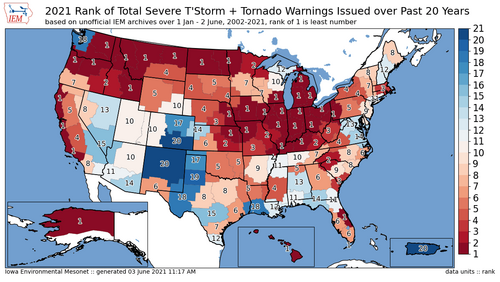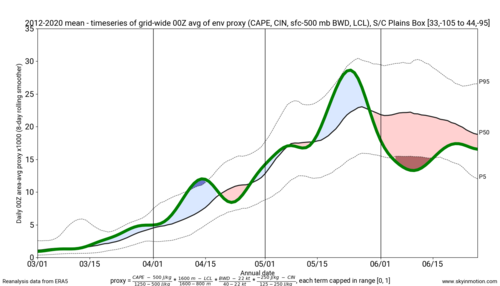I think all this continues to be reflected in how the chasing community is evolving. There's something of a bifurcation between tour operators, chasecationers, the independently wealthy, and hardcore addicts on the one hand, and more casual to moderately committed chasers of eras past on the other. For the latter group, chasing is probably nothing but a source of grief these days, leading to burnout, sniping on social media, and even people just losing interest in the hobby entirely.
Yep, this is now me in every sense.
I have gone on three chases this year, and none of them produced much worth writing home about. Shit, on 5/26 I turned around after crossing into Kit Carson County on I-70 after seeing WoFS shit on the entirety of the W KS setup. Less than 30 minutes later the Brinkelman, NE storm had fired, but I was already 30 extra minutes out of position. I would have had to have driven excessively illegally to catch the end of that cycle of tornadoes.
And I'm sooooooooooo beyond sick of being in that position.
I have not had a clearly-tornado-seen chase since Memorial Day 2018, and I have chased fewer times since that day than any other period in my chasing career. I think since then I have 9 total chases, because, as Brett said, the models almost never depict a setup worth heading out for more than a day in advance, and the number of times CAMs have shit on previously-good-looking setups the day of is enough to make me want to quit.
And, in fact, that's mostly what I contemplate anymore. My life was different when I was still a student and lived in Iowa or Oklahoma; I was closer to the action, had fewer responsibilities, and more free time, and I hadn't seen as much. Today, I'm closer to 40 than 30, divorced, unable to land a long-term relationship (which has become a top-three focus of my life), and I have begun pivoting over to other hobbies that are far more reliable and have a similar level of reward and enjoyment. Those include hiking, cycling, exploring National Parks, reading, and music. The worst feeling I have anymore are those days where it's 4 PM and I already know I've busted, but am 200 miles away from home (and did not plan for, nor cannot, stop nearby and get a hotel for the day). It's such a demoralizing feeling to know you just wasted at least 6 hours of your time, including PTO, gas money, and whatever else you
didn't get to do as a result of wasting your time driving.
Storm chasing has absolutely sucked shit on the Plains since 2018. Those of you who were not chasing before 2018 have no idea how crazy awesome setups used to be. You could wake up at 9 AM and make a dryline target 300 miles away without hardly missing anything. You could chase 3 separate tornado producing supercells on the same day in close proximity to each other. You could see nearly 10 legit tornadoes (not counting satellites and landspouts). Those days have all but disappeared during the classic spring Plains chase season. That shit has only happened in Minnesota or in February anymore.
If this is the new pattern for spring chasing, consider me no longer a storm chaser. I get that chasing was never easy (even in 2010-2013, it never was), but these last few years have been beyond ridiculous and not worth the effort I have put into it lately. Should the events of the 2000s and early 2010s and their associated synoptic patterns ever return, I'll come back out. But don't expect to see me out on the roads much until then.



